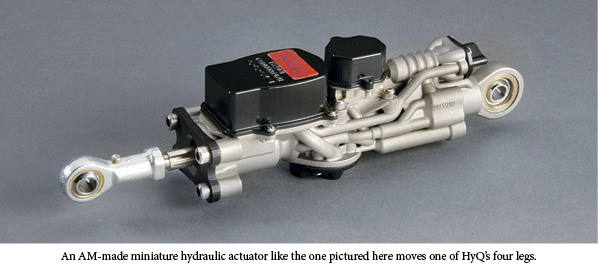Notable Words: Electronic Software Won’t Program Out Bad Hydraulics
 By Lisa DeBenedetto, Account Manager, GS Global Resources
By Lisa DeBenedetto, Account Manager, GS Global Resources
When looking at machine design, there are several major engineered systems that need to be considered and are intertwined at every turn. To name a few: hydraulics, electronics, mechanical, safety, efficiency, regulations, performance, comfort, and cost. I am sure there are others, but you get the point. Many times, smaller OEMs have excellent engineers on staff, but they have few or no hydraulic experts. In my career, moving from the factory representative side to the system integrator/distributor side, this revelation has never been clearer. The challenge is convincing the “we have always done it this way” crowd that an electronic control system update may require a hydraulic or mechanical system update as well.
Have you ever been asked to add or update an electronic control scheme on a system? This seems straightforward. But once you look at the hydraulics and mechanics of the system, it becomes obvious that updating or converting to an electronics scheme will not address the mechanical and hydraulic shortfalls of the system.
Here are things to look for that indicate you need an update in the hydraulics or mechanics instead of adding to or improving the electronic controls.
1.Double or triple gear pumps. In some systems this might be necessary, but hydraulic integrated circuit (HIC) manifold technology might be a better alternative. It’s possible a single pump in conjunction with a priority on demand and a flow-sharing circuit in a custom HIC could improve performance and efficiency while reducing heat. The cost of custom HICs in low quantities has dropped enough to make it a viable option for machine improvements. Machine controllers and electronics are designed to work well with on/off and proportional valves.
2. Double or triple coolers. Depending on the machine this might also be necessary but is potentially a sign that improvements can be made. If the system has a heat problem, adding electronics probably won’t help reduce the heat, but it could certainly tell you the system is hot. If the system has two hydraulic tanks, then two coolers might be necessary. Systems with two tanks usually have one tank specifically for the closed loop portion and a second for the auxiliary functions, which helps maintain cleanliness and cooling where needed.
3. Single-acting cylinders. Generally, these are used because of their lower cost to double-acting cylinders. However, load holding, gravity down, safety, and load drop are all issues where electronic programming can only go so far.
4. Low-speed high-torque motors in creep mode. As we all know, there is low speed and then there is a creep speed. Efficiencies vary in the different types of low-speed high-torque motors. But try operating one well below the manufacturer’s specified speed, and you get torque ripple and speed fluctuations you cannot program out with software.
5. Stalling the engine. There is usually one main reason the engine stalls: you are drawing more horsepower than the engine has available. Looking at the workload requirements and recalculating system demands is one way to find overall hydraulic system improvements. Revamping the electronics might help shift or control where the horsepower is being used, but it cannot circumvent the laws of physics and miraculously create more horsepower.
6. Safety. If the operator needs to stand up or move into harms’ way to operate the machine, creating a radio remote or pendant control system could address these issues. Although radio remote control systems have improved significantly in their robustness, the cost might still be an issue. A cost analysis needs to compare the mechanical and hydraulic safety changes versus the expense of a radio remote.
7. Contamination. If the system is designed where the hydraulic filter elements cannot be changed, new electronic controls will not address the problems.
I am sure there are many other examples. The bottom line is that machine design is complex and trying to improve one aspect (electronic control system) without looking at the others is not a recommended practice.
OEMs of any size can take several actions to update their equipment and machines with new or updated electronic control systems. Invest in your employees. There are several community colleges offering hydraulic, electronic, or mechatronic classes. These programs offer associate degrees. Require your mechanical engineers and electronic engineers to be certified in fluid power or hydraulics specifically. Work with your local system integrators who generally have mechanical, hydraulic, and electrical engineers on staff already. The system integrators also have years of experience on a variety of machines and equipment to draw from.
Whatever the needs for machine updates or improvements, it is critical to look at all aspects of the machine working together and find a fluid power professional who can help. Or better yet, create your own fluid power champion within your organization. To find support with your machine improvements or with training your staff, start with the International Fluid Power Society or the National Fluid Power Association.







